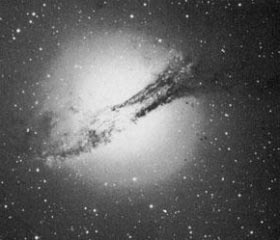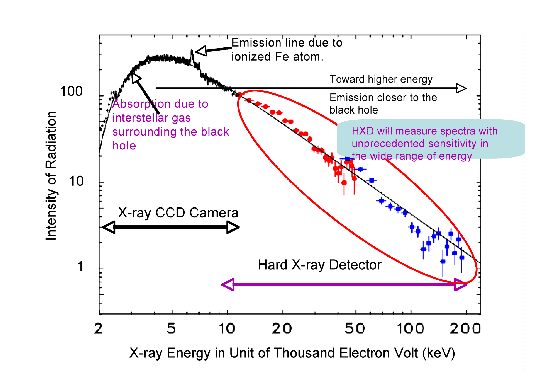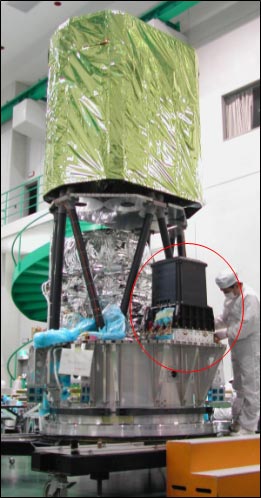Scientific Observation Has Began with Hard X-ray Detector aboard Suzaku
- Detection of hard X-rays from the massive black-hole in Centaurus A -
Japan Aerospace Exploration Agency (JAXA)
The Hard X-ray Detector on board the 23rd Japanese Scientific Satellite "Suzaku" has began its scientific observation. Suzaku has been launched from Uchinoura Space Center by Japan Aerospace Exploration Agency (JAXA) at Japan Standard Time (JST) 12:30 on July 10, 2005. On August 19 (JST), the HXD detected hard X-rays from Centaurus A (Fig.1), an elliptical galaxy at 15 million light years from the Earth. This confirms that the detector is operating at the designed high sensitivity.
On previous observations, a super-massive black hole is known to reside at the center of Centaurus A and intense hard X-rays are emitted is in association with in-fall of interstellar matter to the black hole. Fig.2 shows the spectrum observed by the HXD together with that observed by its sister instrument, the X-ray CCD camera. Theoretical studies suggest that hard X-rays are emitted from regions closer to the black hole than normal X-rays. The world community of astrophysicists is looking forward to high precision data from the HXD and to new discoveries in this little-explored hard X-ray band.
The HXD (Fig.3) is an instrument that has been developed in Japan over 15 years by scientist currently at JAXA, Univ. of Tokyo, Hiroshima Univ., Saitama Univ., Kanazawa Univ., Riken Institute, Aoyama Gakuin Univ., Osaka Univ., and Stanford Univ. It has the highest sensitivity for its wide X-ray energy coverage and enables precision observation of various violent phenomena in the Universe.
With this commissioning of the Hard X-ray Detector, Suzaku has become the first instrument to observe the Universe over the 3 decades of X-ray waveband, from 0.5 keV to 600keV. Observation with Suzaku will be open to the international community of scientists: the in-fall process of matter around the black hole, the heavy element synthesis in the supernova explosion, and search for high-energy cosmic ray acceleration sites are expected to be main observational themes.
|
|

Fig.1 : Centaurus A observed by an optical telescope.
The dark band across the luminous disc is due to absorption of light by interstellar dusts.

Fig.2 : X-ray and hard X-rays (gamma rays) detected from Centaurus A by Suzaku.
The red and blue data points are from the two detector elements in the HXD while the black ones are from the CCD camera. The reduction in radiation intensity below 5keV is due to absorption by interstellar gas. Note that the characteristic X-ray emission by ionized iron atoms is seen as a sharp spike at around 6keV.

Fig.3 : Photo taken during the final assembly of ASTRO-E2 (Suzaku).
The Hard X-ray Detector is the black box marked with red line.
For inquiries:
JAXA Public Affairs Department
Tel: +81-3-6266-6413 to 7, Fax: +81-3-6266-6910